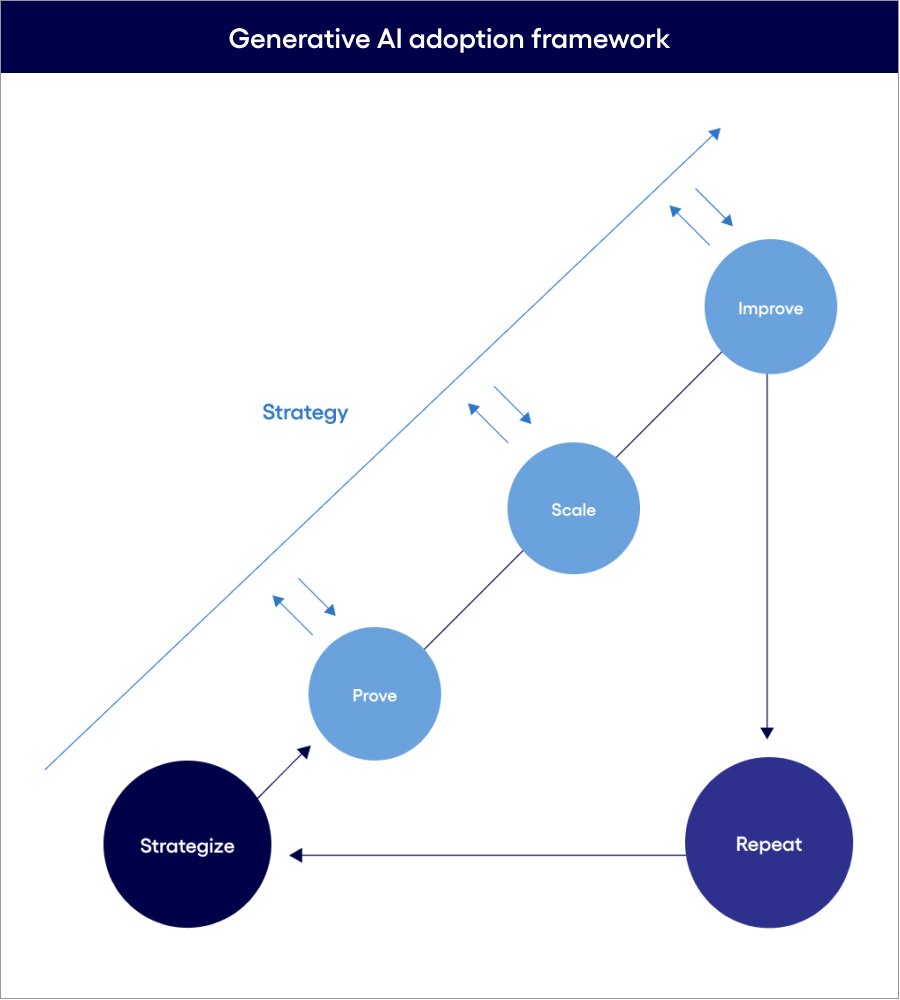Generative AI has shifted from hype to reality faster than any previous technology in recent memory. Much like the internet’s transformative debut, it has captured the attention of leaders, workers, and regulators alike. But while the technology holds extraordinary potential, many organizations are at risk of letting it slip through their fingers due to rushed adoption, siloed implementations, and lack of strategic vision.
At Trinet Technologies, we believe that realizing the true business value of generative AI requires more than just experimentation—it demands a structured, enterprise-wide framework grounded in purpose, governance, and scalability.
Strategize: Building the Right Foundation
The first step to unlocking AI’s potential is defining a clear strategic “North Star.” Organizations must map gen AI initiatives to business goals, not just deploy point solutions for short-term wins.
- Define your North Star. Align AI adoption with overarching business goals—whether it’s operational efficiency, product innovation, or customer engagement.
- Set guardrails for safe experimentation. AI governance should balance innovation and risk. Compliance, data protection, and industry-specific constraints must inform initial deployments.
- Create a constellation of use cases. Encourage cross-departmental ideation but ensure each project connects to a broader roadmap. This helps unify scattered pilots into a scalable transformation strategy.

Activate Cross-Functional Innovation
After establishing strategy, organizations should turn their focus to proving value—fast. At this phase, Trinet recommends building a cross-functional value office that includes business leaders, compliance experts, HR, and IT.
This centralized group manages pilots, helps shape business cases, and guides cultural adaptation. They ensure experiments align with organizational goals and begin preparing the workforce for future roles—such as retraining employees in areas like prompt engineering or AI oversight.
“At Trinet Technologies, we do not view generative AI as a one-off capability, but as a catalyst for continuous transformation—when guided by strategy, scaled with precision, and governed ethically.”
From Experiment to Enterprise Transformation
Scaling successful initiatives requires the right infrastructure, talent, and governance. Gen AI initiatives must not only be resourced adequately but also integrated across functions for compounding value.
- Centralized resource planning to avoid duplication
- Upskilling and partner collaborations to bridge talent gaps
- Prioritized roadmaps based on interconnected value chains
For example, insights from a sales AI model could directly feed into product design, marketing personalization, and support automation—maximizing ROI across business units.
Learn, Iterate, and Evolve
Every pilot, success, and failure becomes a data point in refining your gen AI strategy. Trinet advises clients to adopt a feedback-driven transformation loop, constantly reassessing outcomes, adjusting KPIs, and evolving governance policies.
A successful cost-saving project might evolve into a revenue-generating initiative. Early risk concerns may ease with better understanding and controls. The key is to treat the AI strategy as a living framework—one that matures with each iteration.


